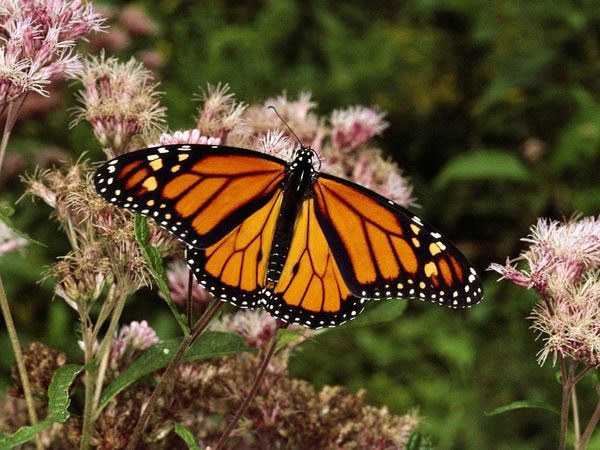New discoveries about the migration habits of monarch butterflies
Biologists say that the annual migration of monarch butterfly from North America to Mexico is a millions of years of activity, determined by a pattern of circulating genes on individual species. this butterfly.
>>>Beautiful photo: A pack of princess butterflies perched on the tree
>>> The magnificent beauty of the monarch butterfly
The findings are published in the October 1 issue of the journal Nature.
Research has found that for millions of years, monarch butterflies have been traveling on a long journey from Canada in the far north to Mexico in the south to stay in the East, a few generations later they have migrate back in the summer.
This is the result based on the mysterious analysis of 101 samples of genes collected from this insect worldwide.
These analyzes have renewed the understanding of the history of migratory butterflies with this distinctive black and bright orange suitcase because many scientists have previously suggested that migration has only recently emerged.

The monarch butterfly monarch butterfly.(Photo: animals.nationalgeographic.com)
These misunderstandings stem from the fact that most members of the birthing moths outside of North America are tropical, not migrating, so scientists always think their ancestors are and only started to migrate since the 19th century.
The results of scientists' research based on genealogical genetics show that this migratory butterfly originated from migratory butterflies that appeared more than 2 million years ago.
They also found that the ability of the butterfly to migrate is related to the single gene morphology that regulates the formation and function of the muscles in their wings.
This newly published result will draw predictions around when we will no longer be able to witness this exciting phenomenon lasting more than two million years because the number of butterflies has now decreased significantly.
In 1996, billions of these insects completed the North-South route but last year the number dropped to only 35 million.
This decline is thought to be the result of deforestation, drought and the use of pesticides with earrings, the main food and also where the butterflies lay eggs.
Scientists hope that the findings will suggest ways to conserve this butterfly's habit of migration.
- Overwhelmed by the sight of billions of migratory monarchs
- Rare Monarch butterflies have new housing in Mexico
- Learn the terrible eating habits of butterflies
- Life cycle of monarch butterfly
- Butterflies are beautiful like fairytale in Mexico
- Close up of mysterious transparent butterflies
- In the past year, thousands of butterflies have evaporated, but scientists do not know why
- Magic king butterfly valley in America
- The magnificent beauty of the monarch butterfly
- See the migration process of animals in 3D
- Closed highway for migrating butterflies
- Beautiful butterflies
 Why do potatoes have eyes?
Why do potatoes have eyes? 'Tragedy' the world's largest carnivorous life: Death becomes ... public toilet
'Tragedy' the world's largest carnivorous life: Death becomes ... public toilet Tomatoes were once considered 'poisonous' for 200 years
Tomatoes were once considered 'poisonous' for 200 years Detecting microscopic parasites on human face
Detecting microscopic parasites on human face Rare insect species at risk of extinction in Vietnam
Rare insect species at risk of extinction in Vietnam  Top 7 rarest butterflies in the world
Top 7 rarest butterflies in the world  Successfully artificially reproduced the rarest butterfly in the world
Successfully artificially reproduced the rarest butterfly in the world  King Butterfly - The famous North American butterfly is in danger of extinction
King Butterfly - The famous North American butterfly is in danger of extinction  Unique, unique butterfly-shaped house in Europe
Unique, unique butterfly-shaped house in Europe  The surprising truth about the image of 'ghost butterfly' flying through space was captured by the observatory
The surprising truth about the image of 'ghost butterfly' flying through space was captured by the observatory 